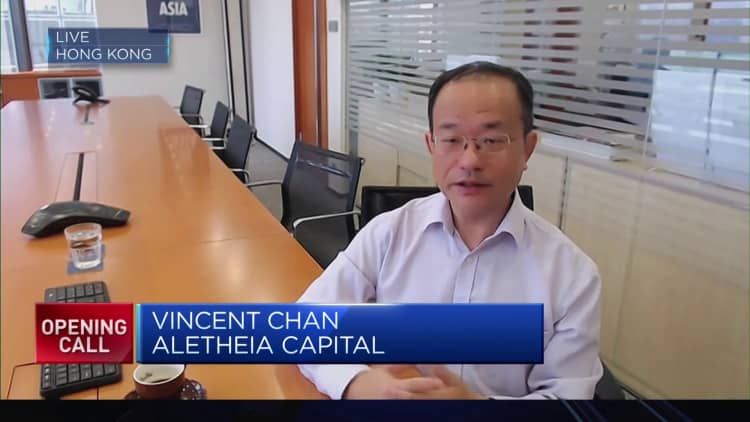China's consumer price index rose 0.1% in April year-on-year, the slowest since early 2021. Month-on-month, prices declined by 0.1%.
Economists surveyed by Reuters expected to see consumer prices rise 0.4% from a year ago and remain unchanged from the previous month.
Core inflation, which excludes food and energy, remained steady at 0.7% year-on-year and 0.1% month-on-month.
April's reading comes after China's inflation rate eased to 0.7% in March after marking a recent peak of 2.8% in September.
Compared with last year, service prices rose 1% in April, according to the National Bureau of Statistics. That's faster than the 0.8% increase in March. Notable strength came from travel as domestic tourism recovers, especially in transportation and leisure activities over the Golden Week holiday.
China's producer price index, which measures prices paid by wholesalers, fell 3.6%. Economists surveyed by Reuters expected to see a decline of 3.2% year-on-year after dropping 2.5% in the previous month.
That's a stark contrast to the latest U.S. inflation data overnight which showed consumer prices rose 4.9% in April – easing in the wake of the Federal Reserve's efforts to tame inflation by hiking rates 10 consecutive times.
The onshore Chinese yuan weakened by 0.04% to 6.9428 against the U.S. dollar shortly after the release.

"China consumer recovery is still in its early stage, given the fact that the economy has been weak for quite some time, and people's income levels are not that strong," Aletheia Capital's China strategist Vincent Chan told CNBC's Street Signs Asia."
Chan added that there is an expectation for the Chinese government to "do more" in providing stimulus to boost the economy's weak demand.
"There's more room for stronger fiscal stimulus," he told CNBC. "Probably the market wants to see that."

Inflation has largely moderated in China following its reopening, prompting market watchers to question whether the world's second-largest economy is heading into deflation, BofA's chief China economist Helen Qiao wrote in a Tuesday note.
"It almost appears that when major central banks find it hard to tame the inflation beast, the [People's Bank of China] would have ranked high on the scorecard for inflation control," she wrote.
Qiao added that China has managed to keep its consumer price index inflation rate at an average of 1.8%, which is close to the lowest 3-year average reading since 2003.
Now, China's core CPI inflation is already well below Japan's levels, BofA economists noted.
Though not yet at deflationary levels, China's low inflation is likely driven by insufficient demand.
"Households, though have already seen a notable pent-up demand from tourism during the recent holidays, are still cautious on goods spending, especially for large ticket items (white goods, autos etc.,)," Qiao wrote in the note.
"The weak labor market as well as the slower recovery in the property market continued to weigh on consumer sentiments," she wrote.
Inflation spillover unlikely
The service-driven inflation readings show there is a lower chance of inflation from China's reopening spilling over to the global economy.
"In short, it is clear that the service sector is normalizing quickly since the beginning of the year, but at this stage the broadening of the reopening recovery remains to be seen with risks from slowing exports, a sluggish property recovery, still weak confidence," Societe Generale economists Michelle Lam and Wei Yao wrote.
The latest Caixin/S&P Global services purchasing managers' index remained in growth territory in April, showing the service sector remained a bright spot despite disappointing factory activity data.
"The service-driven nature of this recovery also means there are less inflation spillovers to the rest of the world this year," they wrote.
– CNBC's Lim Hui Jie contributed to this report

